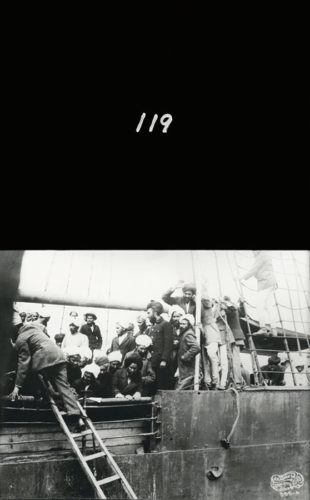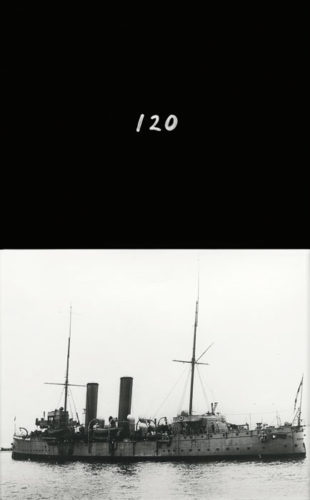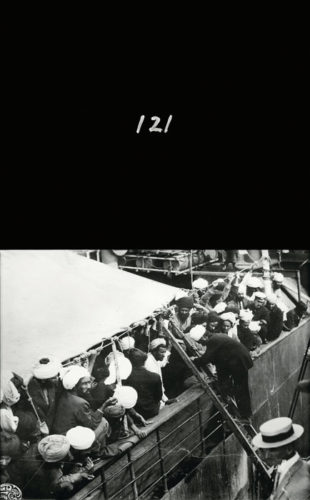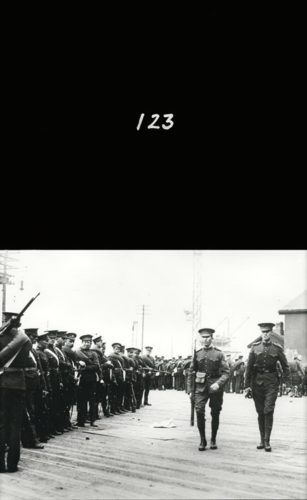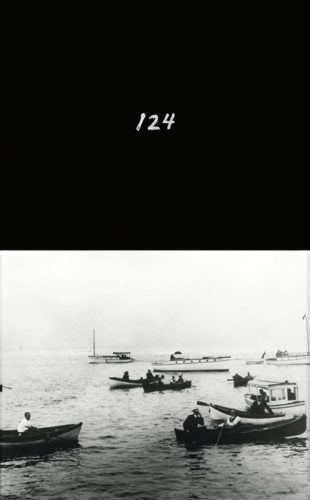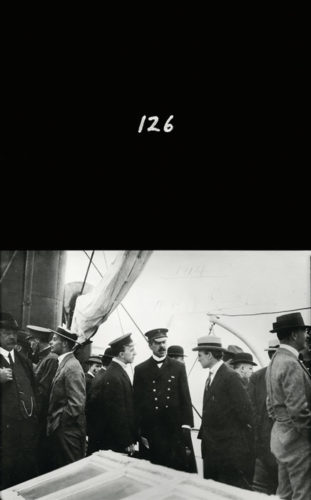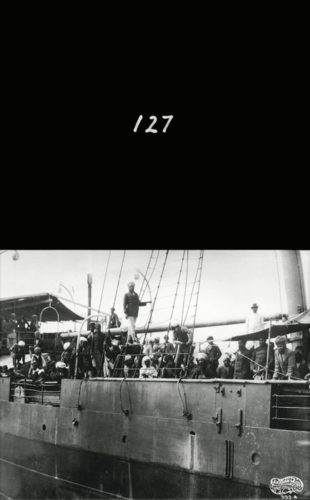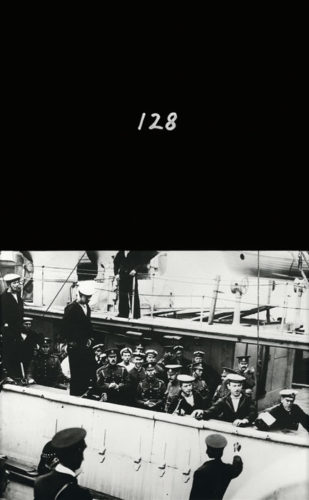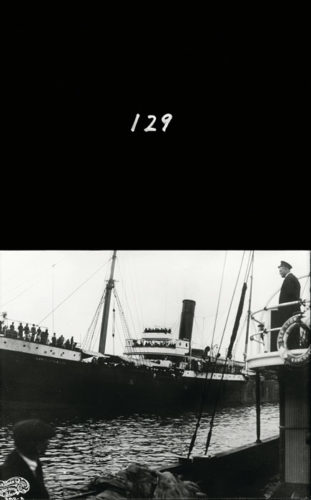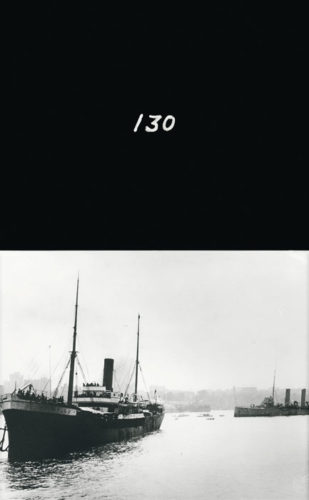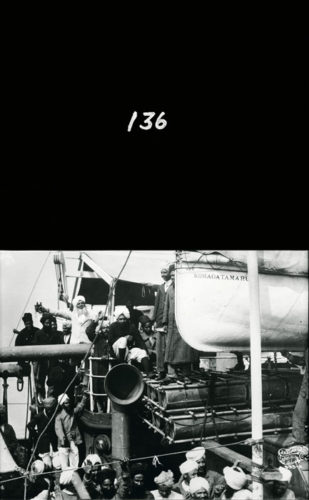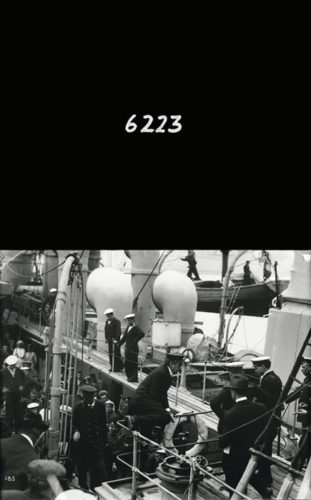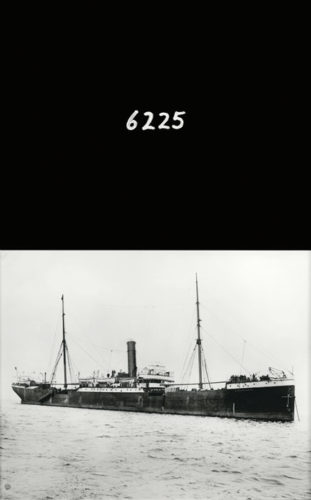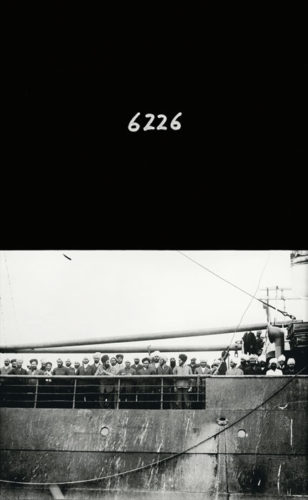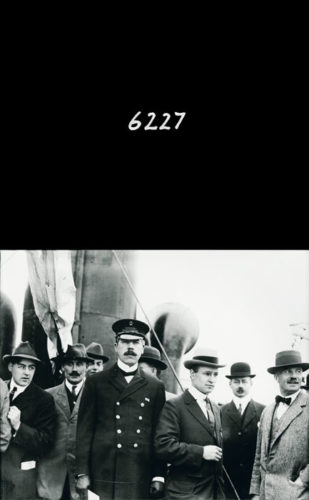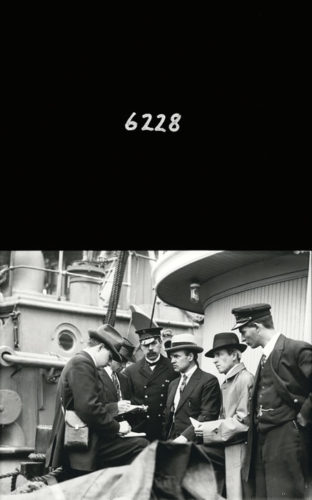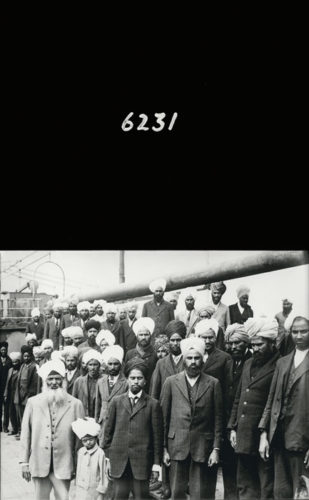19 May 2020
Works from the Collection: Roy Arden
-
Roy Arden
ArtistRoy Arden (Canadian, b. 1957) is a Vancouver artist working in diverse media that includes photography, video, sculpture and collage. Arden studied at the Vancouver School of Art and the University of British Columbia and has been active as an exhibiting artist since the late 1970s. His archival works of the 1980s examined the nature of the photographic and questioned its role in the construction of history. Arden has had solo exhibitions at the Ikon Gallery and the Vancouver Art Gallery; his work has been included in exhibitions at Kunstmuseum Basel and the Museum of Modern Art, Antwerp. His work is in the permanent collections of major international museums such as the Museum of Modern Art, New York, the Los Angeles County Museum of Art and the Stedeljik Museum, Amsterdam. In addition to his work as an artist, Arden has taught, curated and published critical texts.
Read More
Roy Arden
Komagata Maru, 1989
Collection of the Morris and Helen Belkin Art Gallery, gift of the artist, 1994
On May 18, 2021, Vancouver mayor Kennedy Stewart formally apologized for the city’s role in the Komagata Maru incident, proclaiming May 23, 2021 as the first annual Komagata Maru Day of Remembrance. It was on May 23, 1914 that the Japanese ship the Komagata Maru entered Burrard Inlet with 376 passengers, mostly from the Punjab, seeking immigration to Canada. Canada’s then recently strengthened anti-immigration laws were deployed to prevent the entry of all but 20 of the passengers (who already had resident status), in spite of attempts by supporters from Vancouver’s established South Asian community to resolve the issue through the courts. The ship languished in the harbour until July 23 when it was escorted to sea by a gunboat. On returning to India, the colonial police and troops attempted to stop the passengers from entering Kolkata as they were rumoured to have been radicalized into anti-British-rule activists. Twenty were killed in the ensuing skirmish.
Vancouver artist Roy Arden made a series of works from 1985 to 1990 using archival images of Vancouver’s “ill-concealed traumas,” making a kind of history that ran counter to the usual settler culture narratives of triumph and progress. His topics included the unemployed workers’ occupation of the Post Office and the Vancouver Art Gallery in 1931, the round-up of Japanese-Canadians for dispossession and internment in concentration camps in 1942 and the Komagata Maru incident of 1914. These works depict and commemorate the ugly side of our collective past.
Komagata Maru consists of 18 panels. Each of these is a diptych with an image surmounted by a black rectangle of equal size with the archival accession number in white. The images depict the Komagata Maru and another ship (presumably the one used by immigration officers or the one used to escort the Komagata Maru from the harbour), the ship’s passengers, immigration officers, white men in uniform, and in one image, people watching on a Vancouver pier.
The dialogue between the black numbered squares and the images is the fundamental structure of the piece. Arden notes, “In works like Rupture, Abjection, West and Mission, the monochromes were meant in part to invoke the monochromes of modernist and avant-garde art. With Komagata Maru, I sought to make an image of the archive, hence the inclusion of the accession numbers in white ink. The accession numbers are evidence of the fragmentary, evolving nature of archival information. We can see that the numbers are in order, but take a big jump from 136 to 6223 – this points to a long gap in time between the acquisition of the negatives in the suite. For a period of time, only the images up to 136 constituted the photographic record of the event, then many years later, more images were added to the record. The vertical seriality also echoes the storage method of vertical file cabinets. The black monochromes are exposed photopaper, which can only be exposed and developed once. Like events in time, this is irreversible.”
Arden’s selection does not flesh out a chronological narrative but does underline the interactions, such as they were, between the would-be immigrants and the immigration authorities. The numbers, especially juxtaposed to images of would-be immigrants, evoke the bureaucratic dehumanization of people who are given numbers instead of names. Also, the picture of spectators, presumably eager to see the Punjabis denied entry, is a picture that brings us as viewers into the story. Throughout his history series, as in Komagata Maru, Arden selects images also for their composition and the resonance of that composition to works in the history of painting.
Roy Arden (Canadian, b. 1957) is a Vancouver artist working in diverse media that includes photography, video, sculpture and collage. Arden studied at the Vancouver School of Art and the University of British Columbia and has been active as an exhibiting artist since the late 1970s. His archival works of the 1980s examined the nature of the photographic and questioned its role in the construction of history. Arden has had solo exhibitions at the Ikon Gallery and the Vancouver Art Gallery; his work has been included in exhibitions at Kunstmuseum Basel and the Museum of Modern Art, Antwerp. His work is in the permanent collections of major international museums such as the Museum of Modern Art, New York, the Los Angeles County Museum of Art and the Stedeljik Museum, Amsterdam. In addition to his work as an artist, Arden has taught, curated and published critical texts.
Works from the Collection considers one work in the Belkin’s permanent collection that particularly inspires us; at this moment in May 2021, we are looking at these works through the lens of the current crises around us. This entry comes from Scott Watson, the Belkin’s Director and Curator since 1989 when it was still the UBC Fine Arts Gallery in the basement of the former Main Library (now the Barber Learning Centre). He shares his time between Vancouver, Berlin and Hornby Island. To see more of the Belkin’s collection, visit https://collection.belkin.ubc.ca.
-
Roy Arden
ArtistRoy Arden (Canadian, b. 1957) is a Vancouver artist working in diverse media that includes photography, video, sculpture and collage. Arden studied at the Vancouver School of Art and the University of British Columbia and has been active as an exhibiting artist since the late 1970s. His archival works of the 1980s examined the nature of the photographic and questioned its role in the construction of history. Arden has had solo exhibitions at the Ikon Gallery and the Vancouver Art Gallery; his work has been included in exhibitions at Kunstmuseum Basel and the Museum of Modern Art, Antwerp. His work is in the permanent collections of major international museums such as the Museum of Modern Art, New York, the Los Angeles County Museum of Art and the Stedeljik Museum, Amsterdam. In addition to his work as an artist, Arden has taught, curated and published critical texts.
Read More
Related
-
News
19 Jan 2021
Works from the Collection: Audrey Capel Doray
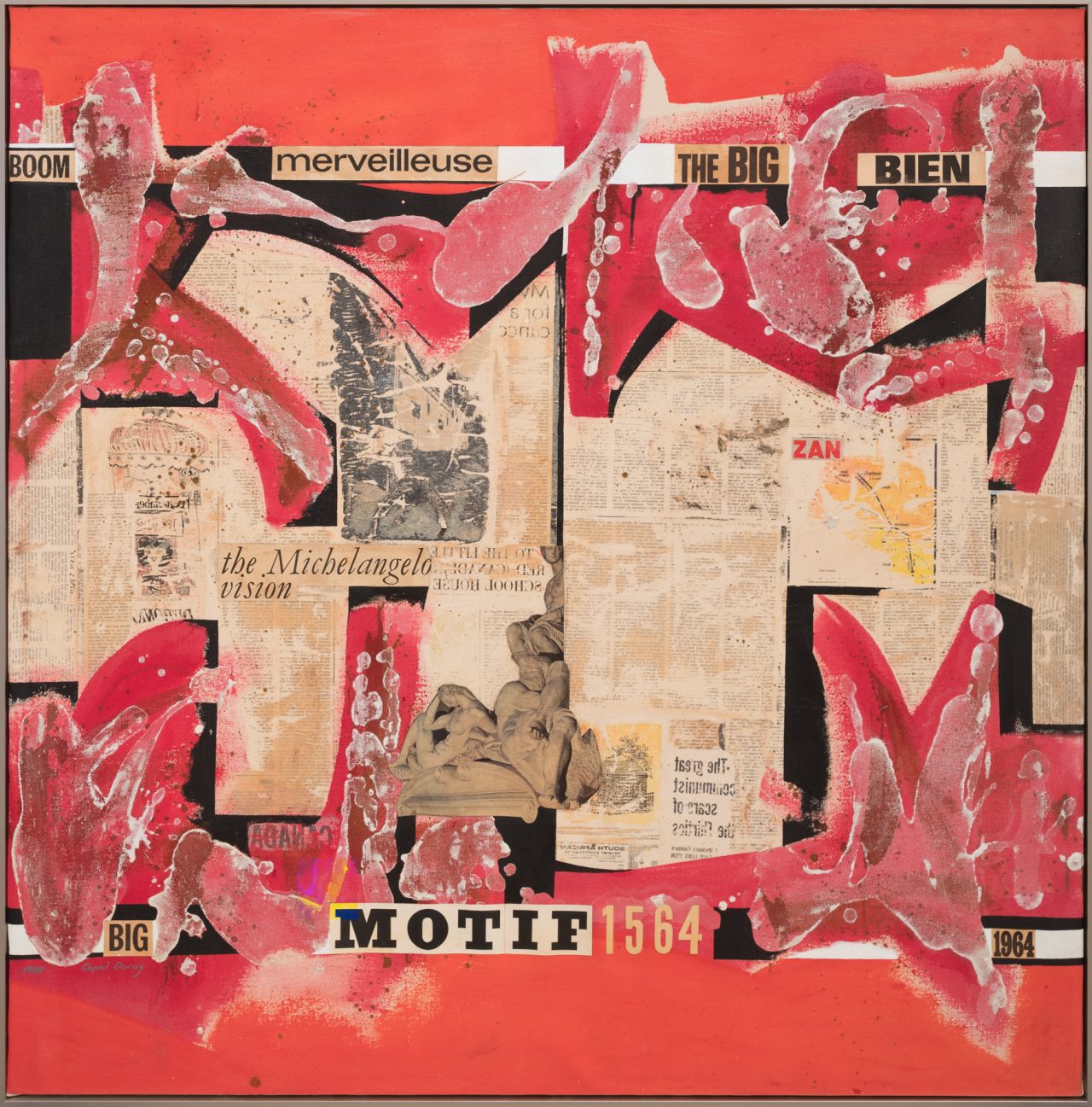 [more]
[more] -
News
04 May 2020
Works from the Collection: David Horvitz
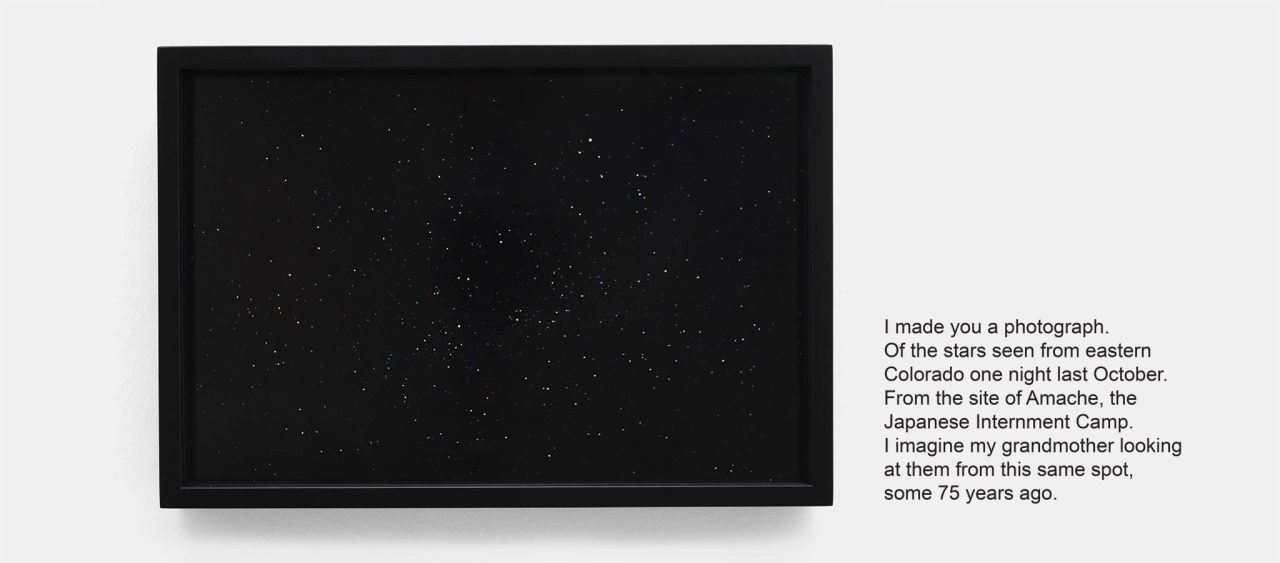
Scott Watson looks at David Horvitz's 2017 For Kiyoko through the lens of the current crises.
[more] -
News
14 Apr 2020
Works from the Collection: Janet Cardiff and George Bures Miller
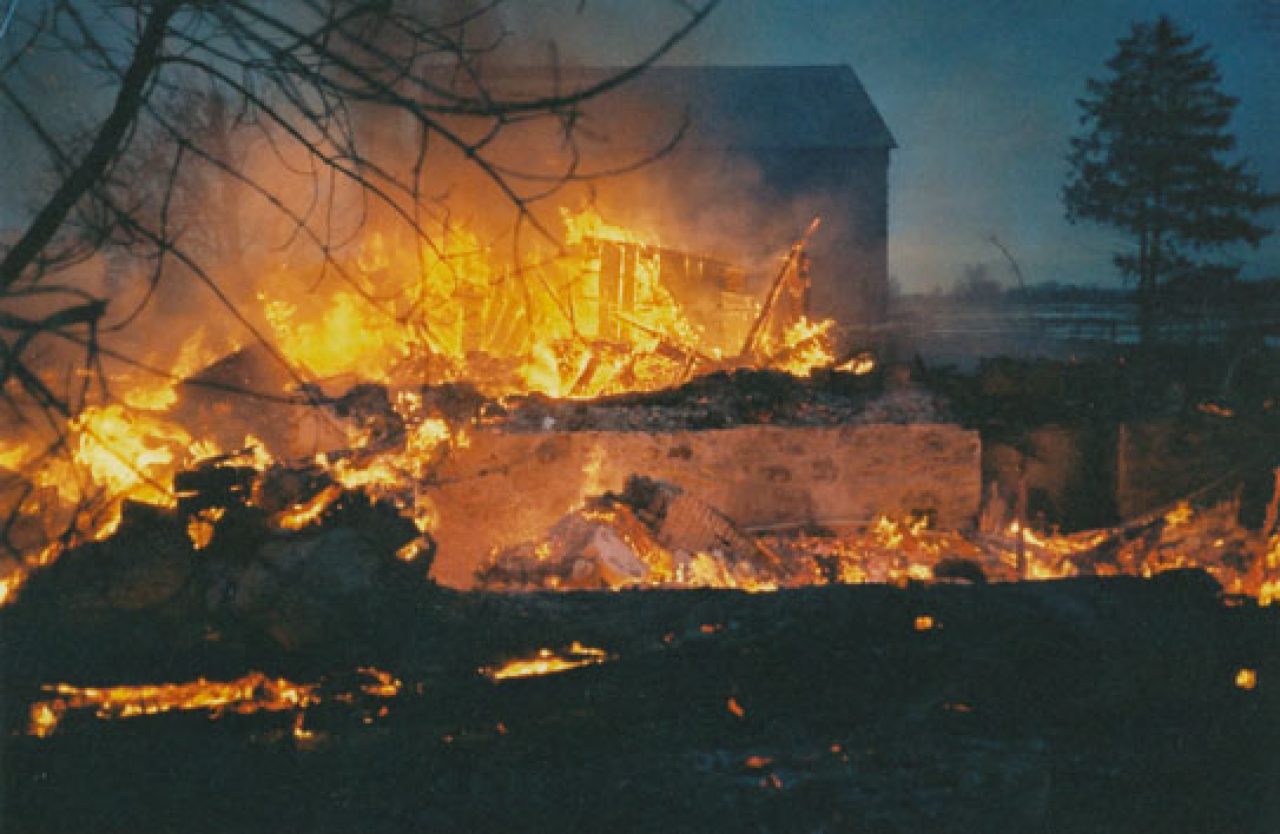
Teresa Sudeyko talks about Janet Cardiff and George Bures Miller’s 2001 House Burning.
[more] -
News
24 Jul 2020
Works from the Collection: Krista Belle Stewart
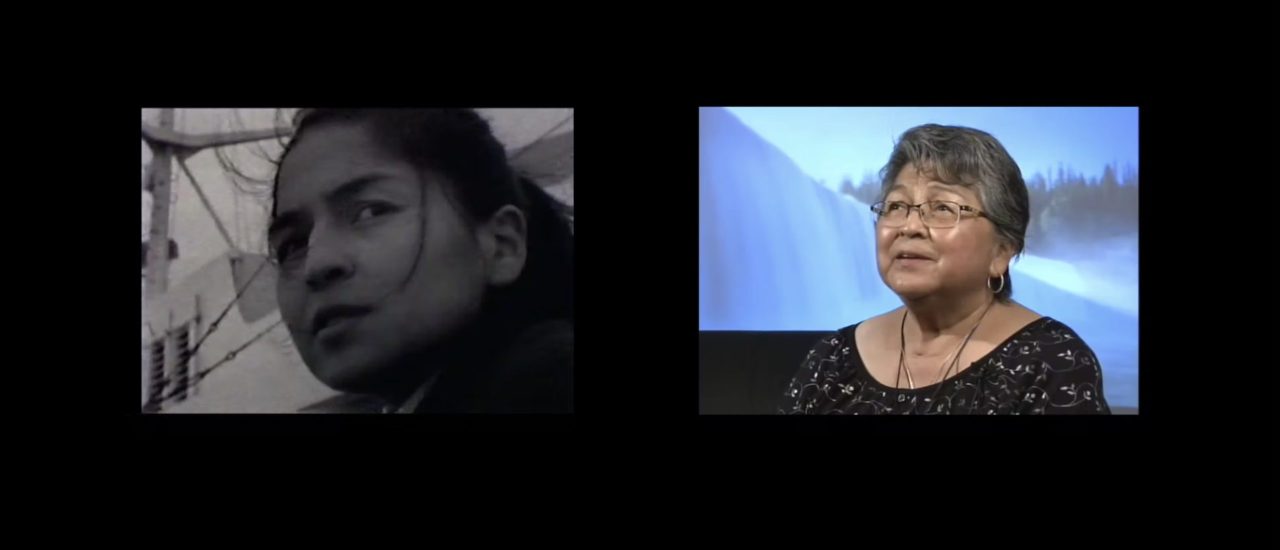
Karen Zalamea talks about Krista Belle Stewart's two-channel video, Seraphine, Seraphine (2015).
[more] -
News
03 Mar 2021
Works from the Collection: Laiwan
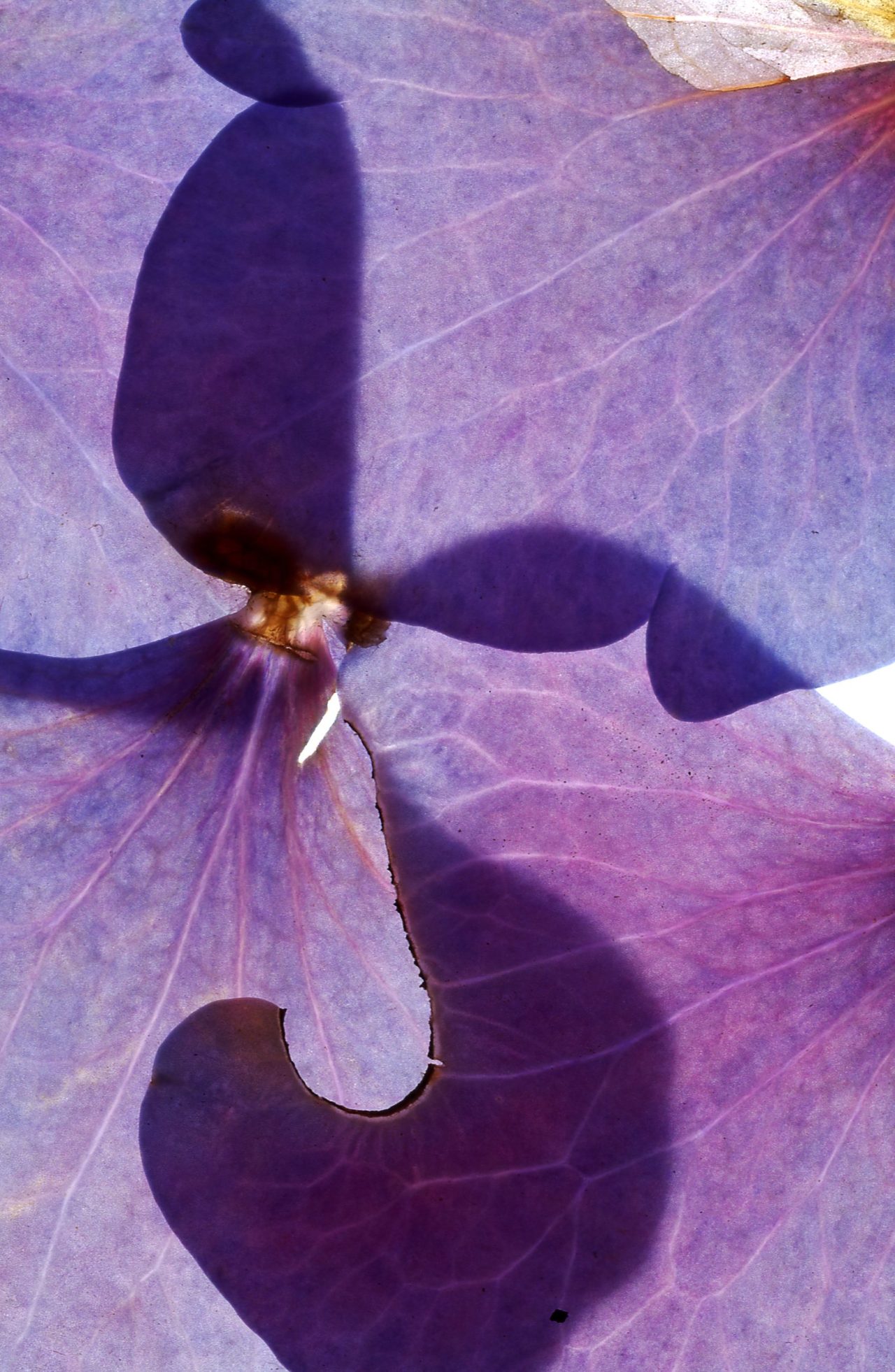
Laiwan writes, "Begun in 1987 investigating the questions, What is an image? What is a photograph?, she who had scanned the flower of the world... is an ongoing project where I collect flowers from the city I am showing in, placing the petals into slide mounts."
[more] -
News
11 Jan 2021
Works from the Collection: Rhoda Rosenfeld

Rhoda Rosenfeld's work from the series Maps of the World (1977) is included in Stations: Some Recent Acquisitions.
[more] -
News
11 May 2020
Works from the Collection: Robert Steele
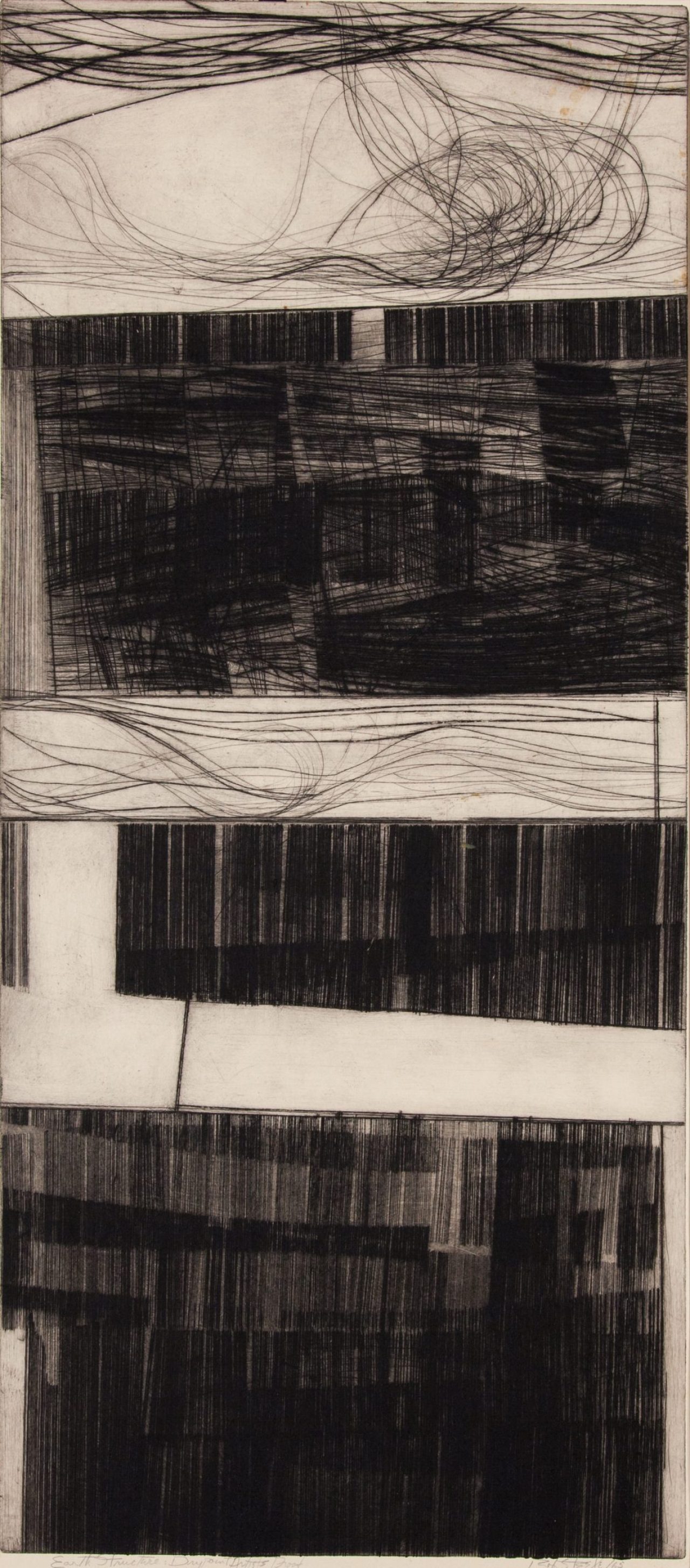
David Steele chooses a work by his late father, Robert Steele, that holds deep resonance for him.
[more] -
Exhibition
12 October 2002 – 3 November 2002
Roy Arden: Video
The Belkin Satellite is pleased to present Roy Arden: Video, the first local exhibition devoted to recent video work by this renowned Vancouver artist. For the past two decades, Arden has built a reputation as one of Canada’s most respected photo-based artists. In an ongoing investigation of the social landscape, Arden’s works have explored the aesthetic economies particular to the re-presentation of archival photographs, serial documentation as well as the large-scale photographic tableaux.
[more] -
Exhibition
21 November 1997 – 25 January 1998
Roy Arden
Co-curated by the Morris and Helen Belkin Art Gallery and the Art Gallery of York University, this exhibition presents a selection of work from 1991-1997 by Vancouver artist Roy Arden.
[more]
